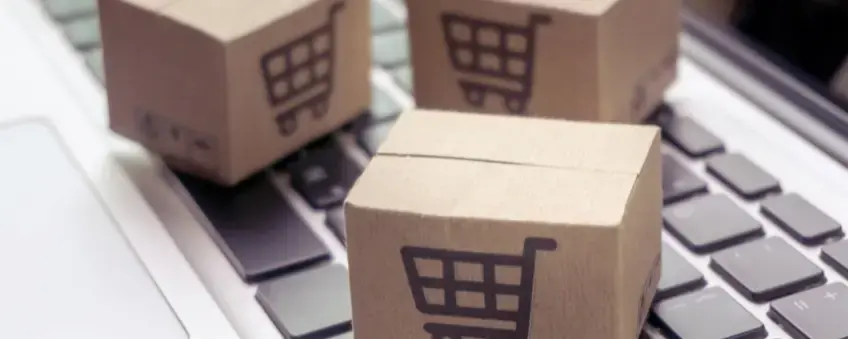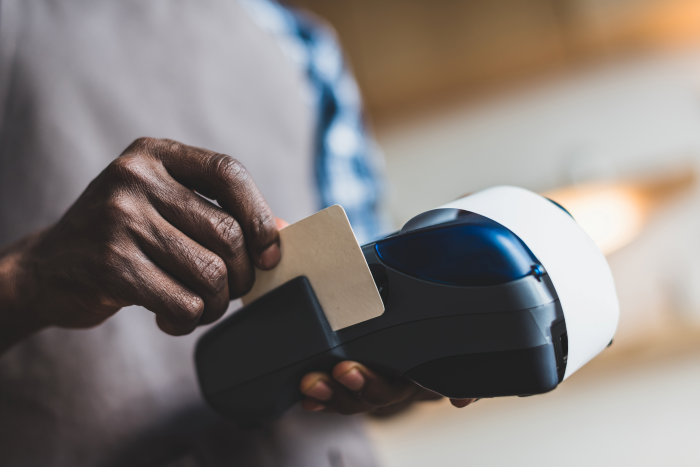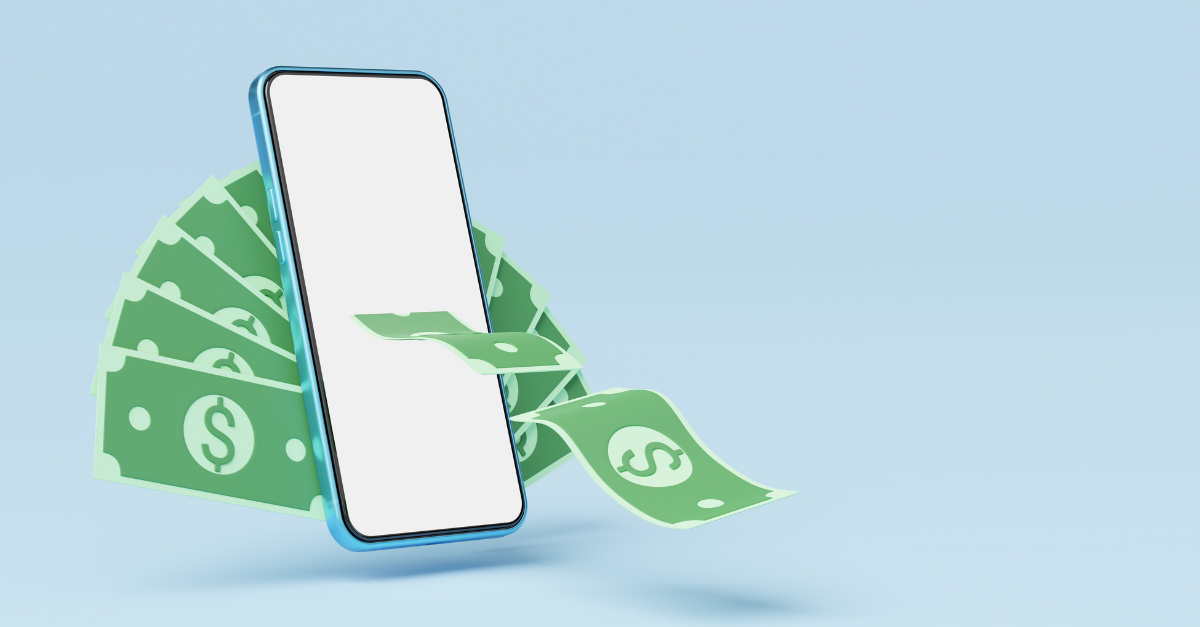It's no secret that fewer people carry cash, and digital payments are becoming more convenient and accessible. The popularity of credit cards and digital payments has forced businesses to adopt new ways of processing payments. Credit card readers and other terminals can help companies accept payments anywhere.
Card readers offer customers a comfortable and reliable way to pay. As confirmed by a recent 2022 study, 87% of Americans own a credit card, so savvy business owners need to have a variety of flexible methods for payment processing.
Selecting the right card reader for your business is a great way to foster growth, enhance customer experiences, and transition from cash to credit card payments. This guide will examine a broad spectrum of card readers and assess them based on affordability, ease of use, versatility, and compatibility criteria.
Best Credit Card Readers for Small Business
The best credit card readers for small businesses should balance cost, functionality, security, and ease of use while aligning with your business's specific requirements and goals.
Square's Card Readers
Square offers four hardware machines: the Square Register, the Square Tap and Chip Reader, the Square Terminal, and the Square Stand. Card-present transactions with Square will cost you 2.6% + $0.10 each, and card-not-present transactions will cost you 2.9% + $0.30. Invoices will cost you 3.3% + $0.30, and manually entered transactions will cost you 3.5% + $0.15 each.
Square Register
The Square Register transforms your business with its fully integrated point-of-sale system, eliminating the need for extra devices or apps. It prioritizes security and reliability, offering 24/7 support, chargeback protection, a 2-year warranty, and Offline Mode. Square Register is adaptable for various businesses, from restaurants to retail. You can customize your setup with compatible accessories, connecting seamlessly with Square for Retail or Square for Restaurants to enhance overall operations. Additionally, the dual displays cater to both you and your customers, accepting all major cards and integrating with Cash App for broader customer reach.
Square Tap and Chip Reader
The Square Reader for contactless and chip (2nd generation) is a practical solution for seamless chip and contactless payments. This compact credit card reader ensures secure transactions with features like 24/7 fraud prevention and data security. Setting up is straightforward – connect wirelessly, accept cards, and receive funds as soon as the next business day or instantly for a 1.5% fee.
Additional features include an EMV chip reader, NFC payments, connectivity through a lightning port or 3.5 mm headphone jack, and a sleep mode for power conservation. The free mPOS package includes customer engagement tools, reporting, inventory and team management, invoicing, and gift card support.
Square Terminal
The Square Terminal is a straightforward point-of-sale system tailored for businesses on the go. With a durable battery, wireless design, and an integrated receipt printer, it facilitates payments wherever you operate. Accepting chip, contactless, and magstripe payments, Square Terminal features a 5.5″ color touchscreen, a built-in receipt printer, and supports EMV, NFC, and magstripe methods. Whether as a standalone reader or an extra screen for your existing setup, Square Terminal offers practicality for your business.
Square Stand
The Square Stand is an iPad point-of-sale solution with a built-in card reader for seamless checkouts. Designed for a single iPad, it provides a desktop point-of-sale solution with chip and contactless payment processing. Setting up is easy with the Square Point of Sale app, which is compatible with 10.2" and 10.5" iPads. It simplifies payments with clear markings for contactless taps, eliminating the need for extra readers. Consider the Square Stand Mount for added flexibility.
Costs for Square Devices
This is how much each Square device costs:
- Square Register: $799
- Magstripe Chip Card Reader: $0
- EMV/Contactless Card Reader: $49
- NRF Reader: $59
- Square Terminal: $299
- Square Stand: $149
Clover's Suite of Credit Card Devices
Clover hardware includes the Clover Mini, Go, Station Solo and Duo, and Flex. Card-present transactions with Clover cost 2.3% + $0.10 or 2.6% + $0.10 each, whereas card-not-present transactions cost 3.5% + $0.10.
Clover Station Duo
The Clover Station Duo combines a 14-inch merchant screen and a 7-inch customer screen for seamless order confirmation and diverse payment options. It matches the Station Solo's features but with enhanced power and is ideal for retail and restaurants. Despite being the priciest, it includes a cash drawer and receipt printer, streamlining checkouts. With dual screens, expandability, and robust security, this all-in-one POS simplifies operations. Key features include remote management, versatile payment acceptance, and customization options.
Clover Mini
The Clover Mini is a compact countertop credit card reader that offers comprehensive payment acceptance and receipt printing without the need for a tablet. Despite its smaller size and lower cost, it replicates most features of the larger Clover Station Solo/Duo, including inventory management and customer tracking with paid monthly plans. With an 8" touch screen, it supports chip, swipe, and contactless payments like Apple Pay and Google Pay. Although priced higher than some competitors and requiring a monthly subscription, the Clover Mini is an excellent choice for businesses seeking more than a basic credit card terminal without the complexity of a complete POS system.
Clover Go
The Clover Go is a 3-in-1 mobile card reader compatible with iOS and Android devices via Bluetooth, accepting swipe, dip, tap, and NFC payments. It offers a choice between a starter plan and a standard package, providing basic payment processing and 24/7 support. The standard plan includes advanced features like sales tracking, detailed reporting, inventory management, and itemized orders. The device operates offline, sends digital receipts, and seamlessly integrates with the Clover Dashboard for comprehensive business management. Backed by a complete merchant account, Clover Go ensures stability during fluctuations in processing volumes. With optional secure mounting, the Clover Go Dock offers countertop convenience and continuous use through a USB charging port.
Clover Flex
The Clover Flex is a compact handheld credit card reader capable of processing all credit card payment types, scanning barcodes, and printing receipts. Its built-in screen provides a professional checkout experience, eliminating the need for a personal device. Depending on the chosen monthly plan, the Clover Flex aids in inventory management, sales data viewing, and individual employee logins. Designed for businesses on the move, it offers eight hours of battery life and supports swipe, dip, tap, and contactless payments.
Clover Cost Overview
This is how much each Clover device costs:
- Clover Station Duo: $1,799
- Clover Mini: $799
- Clover Go: $49
- Clover Flex: $599
Paypal Zettle Chip and Tap Reader
The Zettle Card Reader 2 is a versatile and affordable mobile solution for quick card and contactless payments, priced from $29 with a 2.29% + $0.09 transaction fee and no monthly charges. It seamlessly pairs with the Zettle by PayPal point-of-sale app for easy setup and immediate sales processing, accepting major cards and contactless payments. The PCI-certified device ensures secure transactions, and with a rapid charging feature, it offers an all-day battery life. Adaptable to various business setups and compatible with a range of POS apps, the Zettle Reader 2 is designed for scalability and flexibility.
Paypal Zettle Cost Analysis
Zettle's fee structure encompasses four distinct transaction types. Firstly, for card-present transactions, which involve swiping or inserting a credit or debit card (including QR code transactions), Zettle applies a charge of 2.29% + $0.09. Secondly, for keyed-in transactions, where the card number is manually entered into the system, Zettle imposes a slightly higher fee of 3.49% + $0.09. The third category pertains to invoice fees, also set at 3.49% + $0.09.
Shopify's Lightweight Offerings
The Shopify Lite plan ($9/month) is for users who don't want to set up an online store. With it, you can integrate a buy button on your website or blog. However, it isn't available to new merchants. New merchants who want to sell without an online store can only do that with Shopify's Starter plan.
Designed for emerging merchants, the Shopify Starter plan ($5/month) is ideal for selling via social media platforms or messaging apps. This plan enables the creation of product links that can be seamlessly shared within social media posts or messages. To commence selling, you can activate your checkout by selecting a plan or removing your storefront password. Shopify Starter charges a flat fee of 5% per transaction when you process payments through Shopify Payments.
Shopify Tab and Chip Device
Shopify seamlessly blends eCommerce capabilities with its mobile credit card reader, syncing in-person and online sales. The Shopify Tap & Chip Reader facilitates chip card and NFC/contactless payments with wireless connectivity to phones or tablets. Upgrade to Shopify POS Pro for advanced features like unlimited staff access, enhanced customer profiles, loyalty insights, flexible returns, and inventory management. This versatile device supports major payment methods, ensuring convenience and portability. With 24/7 support, free shipping, free 30-day returns, and a standard 1-year warranty (extendable to 2 years with POS Pro), Shopify's Tap & Chip Reader is an efficient solution for on-the-go businesses.
Chipper 2x BT Device
The Chipper 2X BT card reader, previously sold by Shopify, is still supported for users in the United States. This EMV-compliant card reader connects wirelessly via Bluetooth to accept tap, chip, and swipe payments with the Shopify POS app. Requirements include activating a U.S.-based store, activating Shopify Payments, and using USD. Compatible with iOS and Android devices, the reader ensures seamless transactions and has a 1-year warranty. Charging takes 3-4 hours a week, and troubleshooting steps are provided for common issues. Additionally, the reader supports various payment types, including major credit cards and digital wallets.
Pricing for Shopify Readers
This is how much each Shopify device costs:
- Shopify Tab and Chip Device: $49
- Chipper 2x BT Device: N/A
SumUp Card Terminals
SumUp offers two hardware options: the SumUp Solo and the SumUp Plus. It offers transparent pricing with no monthly fees and charges based on the type of transaction. In-person transactions using SumUp card readers incur a 2.75% fee. Online invoice transactions are subject to a 2.90% fee + $0.15. For manually keyed card reader transactions or payment-linked transactions, the fee is 3.25% + $0.15.
SumUp Solo
SumUp's Solo card reader, featuring a sleek touchscreen, stands out with its no-frills aesthetic. It accepts dipped and tapped cards, allows for tipping, and sends digital receipts. Priced at 2.75% per in-person transaction, the Solo offers advanced features, automatic updates, and a charging station. For $169, you can bundle it with a printer for enhanced charging and mobile printing. SumUp Solo caters to businesses seeking an affordable all-in-one card payment solution.
The SumUp Solo, with its touchscreen operation, is the latest user-friendly credit card reader in SumUp's card payment solutions. It accepts various cards and digital wallets, making it ideal for mobile and table-service scenarios.
SumUp Plus
The SumUp Plus Card Reader, compact and efficient, accepts swiped, dipped, or tapped cards, with plenty of payment options. With a minimalistic low-fi screen, it pairs with the SumUp app on smartphones or tablets. It boasts advanced technology, including NFC, Bluetooth, and a durable Li-ion battery. The Plus Cradle Bundle ensures seamless transactions by charging the device for businesses on the go. The SumUp App complements the Plus reader with features like product catalog management, easy admin, and digital cashier capabilities. The app-based Plus reader, with a wipeable keypad and long battery life, is a reliable choice for convenient and straightforward credit card processing.
SumUp Device Costs
This is what each SumUp device costs:
- $99 for the SumUp Solo touchscreen
- $169 for the SumUp Solo Printer Bundle
- $54 for the SumUp Plus card reader
- $64 for the SumUp Plus cradle bundle
Helcim Card Reader
The Helcim Card Reader is a hassle-free credit and debit card payment solution. Equipped with features like Tap & Pay, Chip & PIN, PIN Debit, and Debit Tap, Helcim offers transparent pricing with low processing rates. The Helcim Card Reader includes easy setup, a colored countertop stand, and quick delivery in 2-3 business days. It connects to any device without the need for additional equipment. Beyond traditional machines, the Helcim Card Reader provides extra features like email receipts, inventory and customer tracking, analytics, batch history, cards on file, and multiple color choices.
Helcim Card Reader Costs
The Helcim Card reader costs $99.
SwipeSimple Terminals
SwipeSimple has two distinct hardware options for merchants: the SwipeSimple B250 and the SwipeSimple B200. The company specifies per-transaction rates for lower-risk retail and restaurant businesses, including Interchange + 0.25% + $0.10 for card-present retail transactions and Interchange + 0.20% + $0.09 for restaurant transactions. Negotiation is possible to secure optimal rates. Additionally, there's a $14.99 monthly account fee.
SwipeSimple B250
The Swift B250 is a compact all-in-one credit card reader supporting swipe, chip, and contactless transactions. Measuring 2.6 inches by 2.4 inches by 0.7 inches, it works with an optional charging dock for countertop use. This versatile reader accepts EMV, magnetic stripe, and contactless payments like Apple Pay and Google Pay, connecting securely to iOS or Android devices via Bluetooth Low Energy. It is lightweight, suitable for various mobile businesses, and ideal for on-the-go payments. A simple Bluetooth setup enables quick acceptance of credit cards, including contactless payments, making it an efficient and budget-friendly solution.
SwipeSimple B200
The B200 is a compact two-in-one card reader approximately the size of a business card. It supports magstripe and EMV chip transactions and connects via Bluetooth, making it compatible with recent iOS and Android devices. The SwipeSimple Swift B200 Swiper, a lightweight and portable solution, facilitates easy acceptance of EMV Quick Chip and magstripe card payments. With exceptional battery life and quick recharge time, this affordable device is perfect for on-the-go payments, catering to various mobile businesses. Its simple Bluetooth connection ensures quick setup for seamless credit card transactions.
SwipeSimple Device Pricing
This is how much each SwipeSimple device costs:
- SwipeSimple B250: $125
- SwipeSimple B200: $105
What to Look For in a Credit Card Reader
When considering a credit card reader for your business, concentrate on critical factors that enhance your payment process. Some considerations may include:
Methods of payment acceptance
As a business owner, you should want to accept the most payment methods possible. If that isn't feasible, choose the ones your customers use most frequently. So, ensure your card reader supports various payment methods, most importantly EMV chips, magnetic stripe cards, contactless payments (NFC), and mobile wallets like Apple Pay and Google Pay.
Compatibility with your current payment processor
When selecting the ideal card reader for your business, it's essential to factor in what your current payment processor offers. Often, reseller agreements restrict your processor to specific brands, which can affect the availability of your preferred brand. However, this limitation can also lead to a card reader that integrates seamlessly with your setup.
Alternatively, you might consider opting for an all-in-one, omnichannel integrated system. This system provides additional features that become increasingly valuable as your business grows. An omnichannel system ensures a cohesive experience across multiple sales channels, enhancing efficiency and customer satisfaction.
Contract type and length
Credit card readers often come with accompanying contract agreements, typically in the form of merchant agreements. These agreements may include various fees and conditions, such as application fees, chargebacks, compliance issues, retrieval costs, and hardware leasing. It’s crucial to avoid entering into costly contracts that do not align with your business's specific needs and requirements.
Support for EMV and NFC
Remember to enhance customer convenience and ensure customer privacy using modern security, such as EMV and NFC support, when seeking a card reader. EMV technology utilizes EMV-chipped credit cards to encrypt cardholder data. NFC support lets customers wave phones, tap Apple Watches, or use contactless cards. So, when choosing a reader, consider customer preferences—emphasizing EMV readiness or embracing NFC for contactless payments.
A Breakdown of the Best Credit Card Machines by Type
Best mobile card readers
Explore Square's comprehensive range of card readers tailored for various business needs. The Square Register transforms your business with a fully integrated point-of-sale system, while the Square Tap and Chip Reader offers seamless contactless and chip payments. The Square Terminal and Square Stand provide practical solutions for on-the-go businesses with unique features and capabilities. Costs vary, with the Square Register priced at $799.
Top-rated wireless card devices
Clover's suite of credit card devices, including the powerful Clover Station Duo, is ideal for retail and restaurants. The compact Clover Mini offers comprehensive features in a smaller footprint. The versatile Clover Go is a 3-in-1 mobile card reader, while the handheld Clover Flex provides flexibility for businesses on the move. Prices range from $49 for Clover Go to $1,799 for Clover Station Duo.
The best EMV card machines
The efficient Zettle Card Reader 2 by PayPal is a versatile and affordable mobile credit card reader that supports card and contactless payments. With a transaction fee of 2.29% + $0.09, this PCI-certified device ensures secure transactions. The Chipper 2X BT Device from Shopify, although no longer sold, is still supported and provides reliable wireless connectivity for tap, chip, and swipe payments.
Premier POS system choices
Explore Shopify's lightweight offerings, including the Shopify Tap & Chip Reader, seamlessly blending eCommerce capabilities with mobile POS functionality. It aids inventory management, sales data viewing, and individual employee logins. SumUp's Solo and card readers cater to businesses seeking affordability and advanced features, with costs ranging from $54 to $169. Helcim's Card Reader offers hassle-free payments with features like Tap & Pay, Chip & PIN, and PIN Debit, priced at $99. SwipeSimple's B250 and B200 devices provide compact solutions for on-the-go payments, with costs ranging from $105 to $125. Helcim's transparent pricing structure also ensures low processing rates, and SwipeSimple specifies interchange-plus rates for retail and restaurant businesses.
The Advantages of Integrating Card Swipers in Your Business
Integrating card swipers into your business operations offers a multitude of advantages. These compact devices revolutionize the payment process, and here are some of the benefits they come with:
Convenience
Credit card swipers provide customers with remarkable convenience by facilitating seamless payments through their credit or debit cards. This ease of transactions results in heightened satisfaction and loyalty. The appeal of a credit card reader predominantly stems from its convenience, with mobile point-of-sale (POS) systems being uncomplicated and highly portable. Additionally, NFC technology empowers businesses to adopt a cashless operational approach, enabling customers to tap and complete their transactions swiftly.
Selling on-the-go
Utilizing mobile card swipers empowers businesses to process payments in external settings like trade shows, markets, or pop-up events, expanding sales possibilities beyond conventional brick-and-mortar environments. Furthermore, the convenience of selling on the go extends to businesses offering services. Freelancers, consultants, and professionals on the move can effortlessly accept payments from clients at various locations, eliminating the need for invoicing or waiting for checks to clear.
Back-up POS
As a backup POS, card swipers offer a practical and versatile solution for maintaining payment processing during technical disruptions, providing several benefits. Firstly, they ensure operational continuity by facilitating transactions during downtime, effectively preventing revenue loss. Augmenting this, a backup POS system introduces redundancy, guaranteeing uninterrupted service delivery in the event of system malfunctions. For optimal utilization of card swipers as a backup POS, it's key to ensure that staff can transition adeptly between systems.
Starter POS
A card reader is a practical starter point-of-sale (POS) solution, especially for resource-constrained small businesses and startups. This choice is influenced by affordability, easy setup and use, user-friendliness benefiting both owners and customers, portability, efficient transactions, essential functionalities, space optimization, scalability, and low maintenance. However, assessing your unique business needs before committing to a credit card reader as a starter POS is crucial. If your requirements expand to include features like inventory management or software integration, upgrading to a more comprehensive POS system may be necessary.
How to Choose the Best Credit Card Reader for Your Business
When considering a credit card reader for your business, concentrate on key factors that enhance your payment process. Some considerations may include:
Your preferred method to accept payments
As a business owner, you should want to accept the most payment methods possible. If that isn't feasible, choose the ones your customers use most frequently. So, ensure your card reader supports various payment methods, most importantly EMV chips, magnetic stripe cards, contactless payments (NFC), and mobile wallets like Apple Pay and Google Pay.
Your payment processor's product offering
When selecting the ideal card reader for your business, it's essential to factor in what your current payment processor offers. Often, reseller agreements restrict your processor to specific brands, which can affect the availability of your preferred brand. However, this limitation can also lead to a card reader that integrates seamlessly with your setup.
You might also consider opting for an all-in-one, omnichannel integrated system. This system provides additional features that become increasingly valuable as your business grows. An omnichannel system ensures a cohesive experience across various sales channels, enhancing efficiency and customer satisfaction.
Type and length of contract
Credit card readers often come with accompanying contract agreements, typically in the form of merchant agreements. These agreements may include various fees and conditions, such as application fees, chargebacks, compliance issues, retrieval costs, and hardware leasing. It’s crucial to avoid entering into costly contracts that do not align with your business's specific needs and requirements.
EMV and NFC support
Remember to enhance customer convenience and ensure customer privacy using modern security such as EMV and NFC support when seeking the right card reader. EMV technology utilizes EMV-chipped credit cards to encrypt cardholder data. NFC support lets customers wave phones, tap Apple Watches, or use contactless cards. So, when choosing a reader, consider customer preferences—emphasizing EMV readiness or embracing NFC for contactless payments.
Costs
The cost of your credit card reader should accommodate your budget, credit card fees, processing rates, and hidden costs. While upfront expenses and ongoing fees influence budgets and profits, choosing a reader aligned with your business needs ensures a seamless payment experience.
Processing fees
The average merchant account processing fees range between 1.5% and 3.5%, encompassing various fees for accepting credit card payments. These fees arise from multiple sources and differ depending on the card type accepted and transaction circumstances.
There's the interchange fee, which merchants pay to card issuers; the processor fee, which the payment processor charges for facilitating transactions; and the assessment fees, which go to credit card networks and enable card acceptance.
When combined, the total is your swipe fee. Your processing fees will depend on your specific payment structure, industry, the types of cards you accept, and other factors.
Hardware costs
Card reader prices range from $200 to $1,000, depending on features and the supplier. A couple hundred dollars is reasonable for basic needs, like a magnetic strip, display, keypad, and chip card capability.
Mobile card readers average $40 to $60, handheld terminals are $300 to $400, and countertop terminals range from $700 to $900. Lower-tier readers are often free with a merchant account.
Renting vs. buying terminals
Most businesses purchase terminals from their merchant service provider, while others lease or rent them. Leasing or renting means that you don't pay upfront. This saves you money in the short term but will cost you more in the long term. So, leasing versus buying a terminal will mostly depend on whether you can afford a terminal at the time of purchase.
How to Get a Card Reader
Getting a card reader for your business is a straightforward process that involves a series of simple steps. Here's a more detailed explanation:
- Research Providers: Begin by researching payment processing providers that offer card readers.
- Visit Provider's Website: Once you've identified potential providers, visit their official websites. Navigate to the section that pertains to hardware or card readers. Most providers display their range of devices along with detailed specifications.
- Explore Card Reader Options: Providers often offer various card reader models for specific business needs. Consider your business requirements when exploring the options available.
- Add to Cart: Once you've decided on a card reader, add it to your online shopping cart. Some providers may offer package deals with accessories like charging docks or protective covers.
- Provide Business Information: During checkout, you'll likely be asked to provide basic information about your business. This may include your business name, address, and tax identification number. Ensure accuracy to facilitate a smooth transaction.
- Enter Payment Information: Input your payment details to complete the purchase. This involves providing credit card information or using other accepted payment methods.
- Review and Confirm: Review your order details before finalizing the purchase. Ensure the selected card reader, quantity, and additional items are correct. Confirm the accuracy of your business information and shipping details.
- Wait for Delivery: After completing the purchase, patiently wait for the card reader to be delivered to the specified address. Shipping times can vary based on your location and the provider.
- Set Up and Activate: Once the card reader arrives, follow the instructions to set up and activate it. This typically involves connecting the device to a compatible mobile device or point-of-sale system and configuring any necessary settings.
With numerous options and steps involved in acquiring a card reader, you may find the process time-consuming and complex. That's where EMS can make a difference. By contacting us, you can simplify your search for the best card reader or POS solution tailored to your business needs. Our team of experts is ready to guide you through the process, from selecting the ideal equipment to setting it up and activating it. By partnering with EMS, you can ensure a seamless transition to efficient and reliable payment processing, allowing you to focus on what matters most: growing your business.
Credit Card Reader FAQs
The speed at which you receive funds after a credit card sale varies depending on the payment processing provider. Typically, funds are deposited into your business account within 1-2 business days. Some providers may offer quicker settlement times, while others might take slightly longer. It's essential to review the terms of your chosen payment processor to understand their specific policies regarding fund disbursement.
Card reader prices range from $200 to $1,000, contingent on the features and supplier. A reasonable price falls within the couple hundred dollars range for fundamental functionalities, including a magnetic strip, display, keypad, and chip card capability.
Mobile card readers typically average between $40 to $60, handheld terminals range from $300 to $400, and countertop terminals have a pricing spectrum from $700 to $900. Entry-level readers are often provided for free when coupled with a merchant account. The cost of obtaining a card reader depends on the provider and the specific type of reader selected. While primary mobile card readers are generally affordable and may be offered at no cost by some payment processors, more sophisticated or specialized card readers might entail higher initial expenses. It's vital to weigh the upfront cost and any ongoing fees associated with using the card reader.
Yes, you can transform your smartphone into a card reader by utilizing a mobile card reader device that connects to your phone. Payment processors typically provide these devices and can plug into your phone's audio jack or connect via Bluetooth. Certain payment processing providers offer mobile apps that turn your phone into a virtual terminal. This lets you manually enter card information for transactions without needing a physical card reader.
Setting up a card reader involves a series of steps:
- Choose a payment processor: Select a reputable payment provider that suits your business needs.
- Select a compatible card reader: Choose a card reader offered by your selected provider that aligns with your business requirements.
- Order the card reader: Order the selected card reader through the provider's platform.
- Receive and follow instructions: Once the card reader arrives, follow the instructions for setting it up. This may involve connecting the reader to your mobile device or point-of-sale system.
- Configure settings: Use the provided app or software to configure any necessary settings, such as tax rates or tipping options.
- Test transactions: Conduct test transactions to ensure the card reader processes payments correctly before using them for actual sales.
Card readers are designed with security features to safeguard sensitive cardholder data. Common security measures include encryption and compliance with the Payment Card Industry Data Security Standard (PCI DSS). You must choose a trustworthy payment processing provider that adheres to the recommended security practices. Regularly updating software, securing wireless connections, and educating staff on security protocols contribute to maintaining a safe card transaction environment.
Yes, accepting credit card payments without a physical card reader is possible. Many payment processors offer virtual terminals, allowing you to enter card information manually using a computer or mobile device. This method is suitable for businesses that operate online or handle transactions remotely. However, for in-person transactions, especially for companies with a physical storefront, using a card reader is often more efficient secure, and provides a better customer experience.






